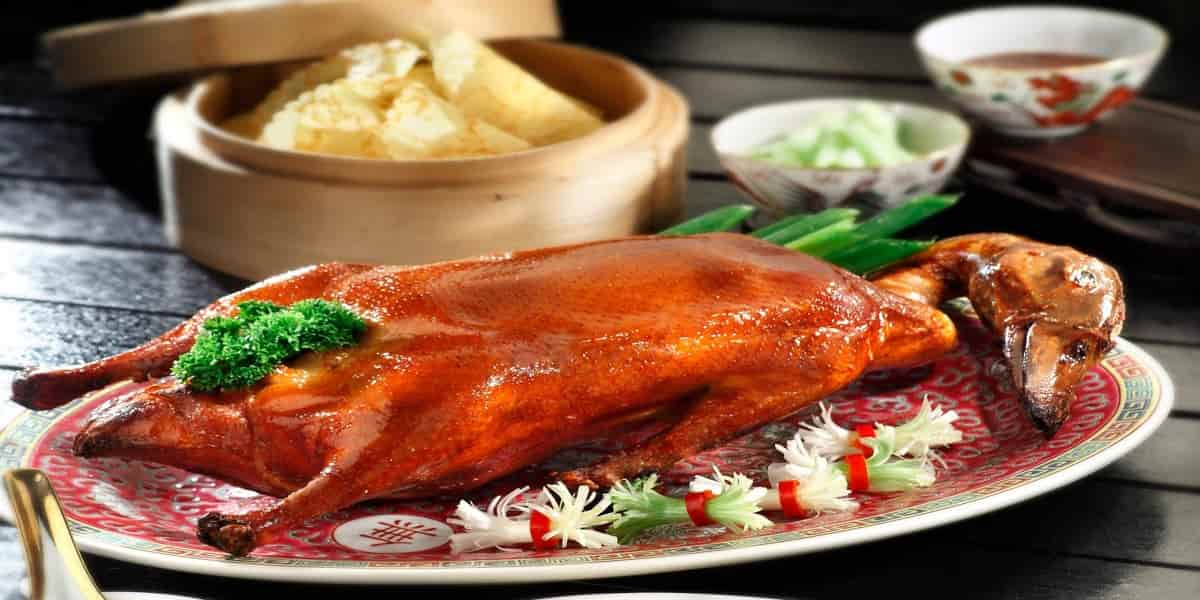Peking Duck Delicacy
Doodlebrary
- Ancient Beginnings: Originated during the Yuan Dynasty (1271-1368) in China.
- Imperial Favorite: Became popular in the Ming Dynasty (1368-1644) as a favored dish in the imperial court of Beijing.
- Culinary Heritage: Peking Duck is a symbol of Chinese gastronomic excellence, combining tradition, flavor, and artistry.
- Enduring Appeal: Its global popularity and cultural significance ensure its status as an iconic dish for generations to come.
- Special Breed: Uses a specific breed of duck called the Pekin duck for its tender meat and thin skin.
- Flavor Enhancements: Ingredients like maltose syrup and vinegar are used to achieve the distinct flavor and crisp texture.
- Skin Separation: The duck is inflated with air to separate the skin from the fat.
- Scalding and Drying: Scalded with boiling water and air-dried to ensure a crispy texture.
- Roasting: Glazed and roasted in a closed oven until the skin is golden and crispy.
- Table-Side Carving: Traditionally carved at the table to ensure proper proportions of skin and meat.
- Accompaniments: Served with thin pancakes or steamed buns, hoisin sauce, cucumbers, and scallions.
- DIY Rolls: Diners make their own rolls by combining the crispy skin, tender meat, and condiments.
- Flavor Harmony: The combination offers a balance of textures and flavors, making each bite a unique experience.
- Symbolism: Represents hospitality, prosperity, and celebration in Chinese culture.
- Festive Dish: Often served during special occasions and gatherings.
- International Acclaim: Peking Duck is celebrated worldwide, with variations served in many countries.
- Adaptation: Restaurants adapt the dish to local tastes while maintaining its traditional essence.
- Skill Required: Requires precision and expertise, making it a specialty dish in Chinese culinary arts.
- Art Form: The meticulous preparation process elevates Peking Duck to more than just a dish—it’s a culinary art.
